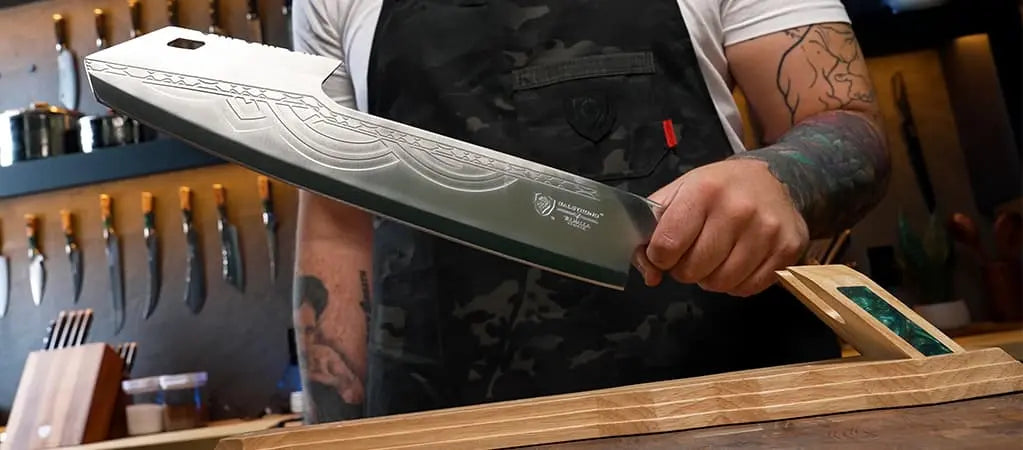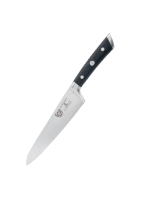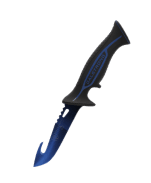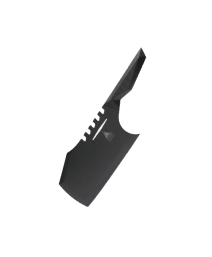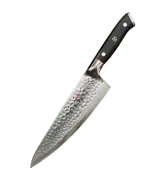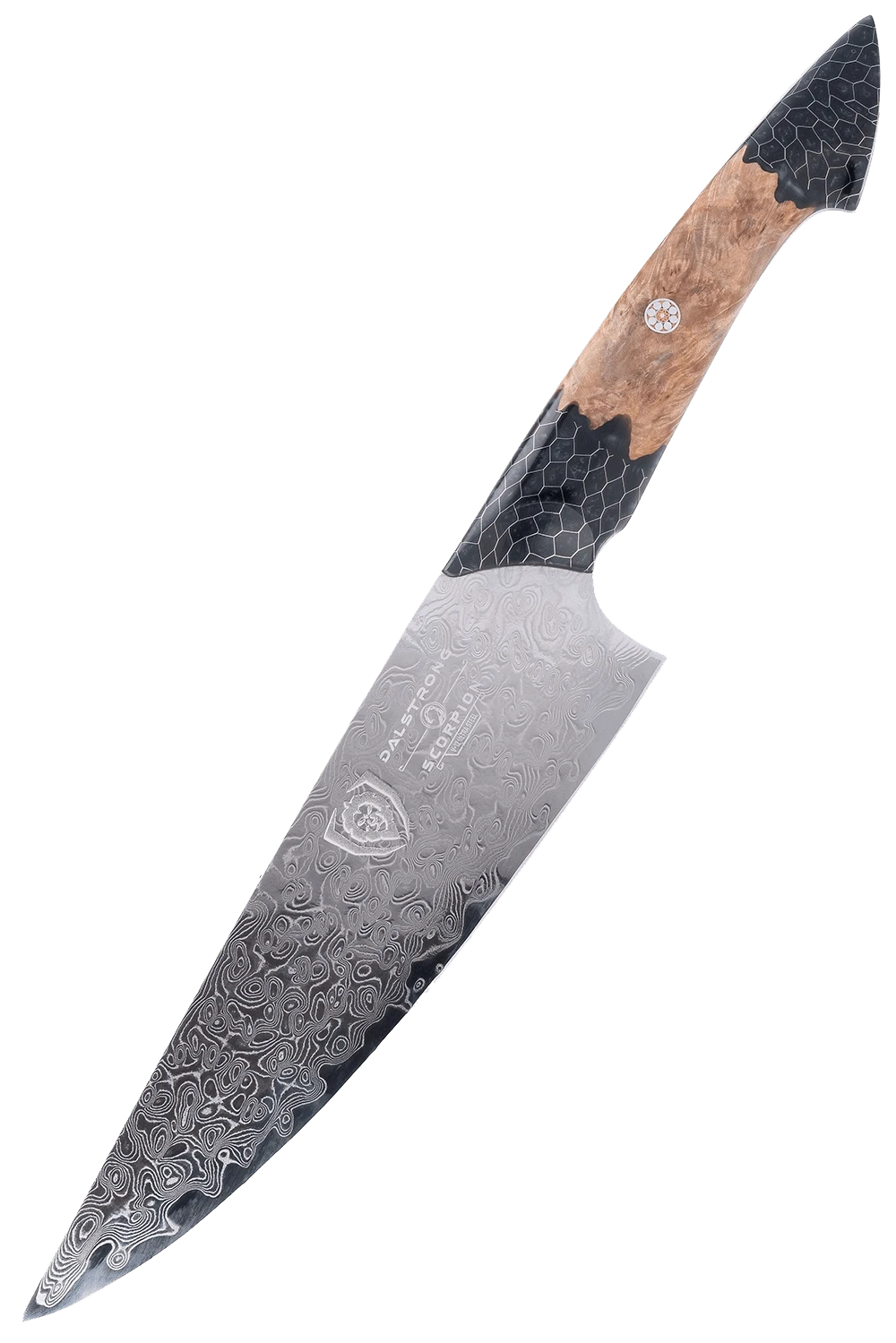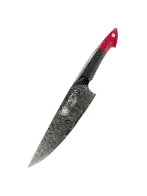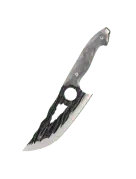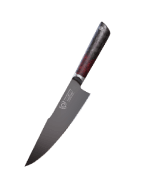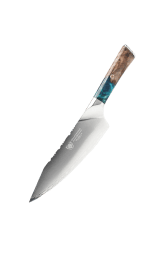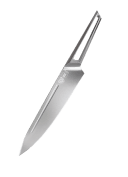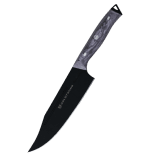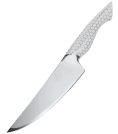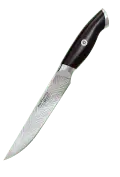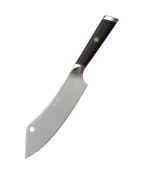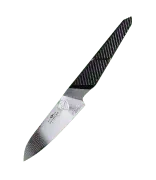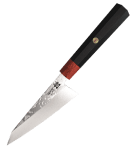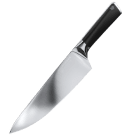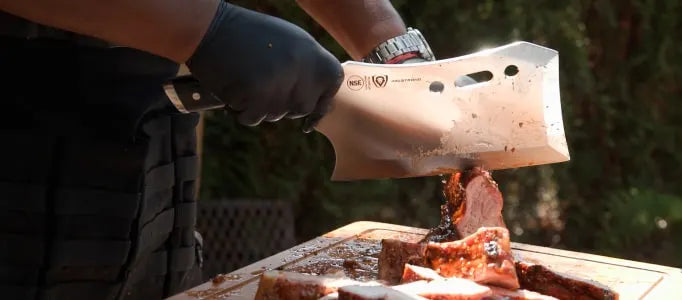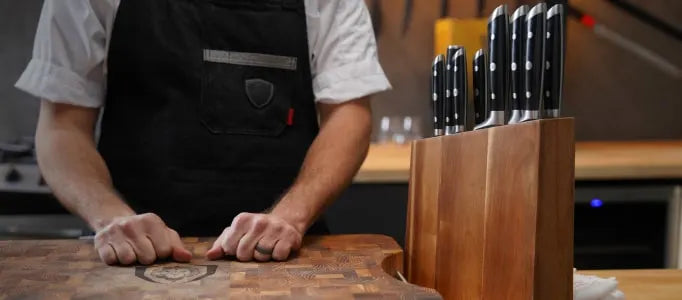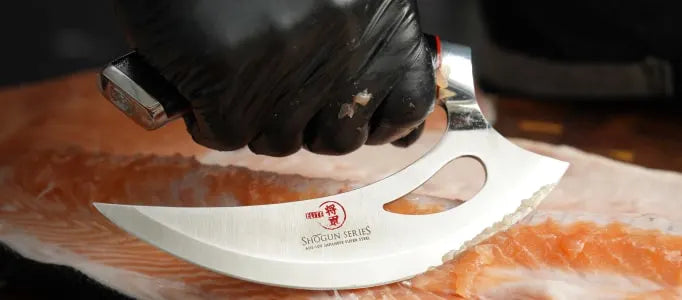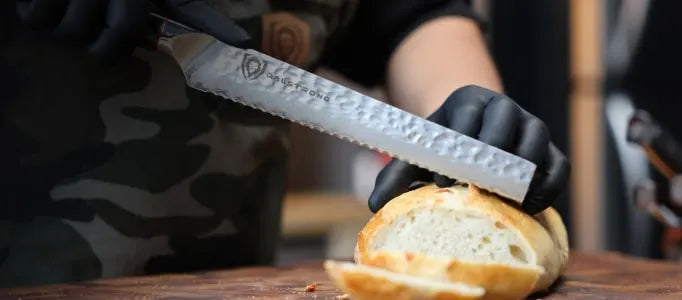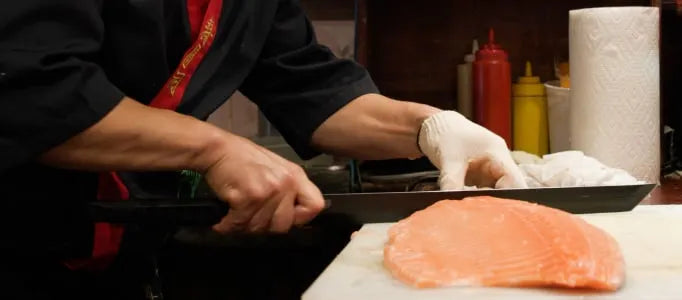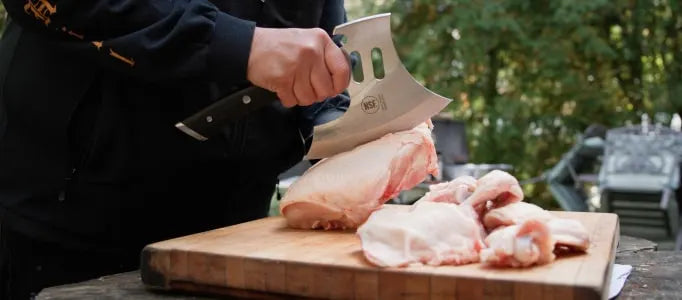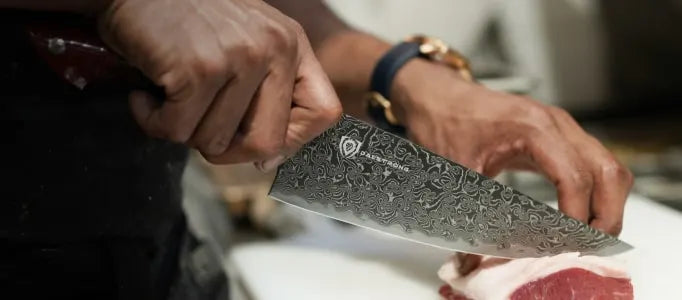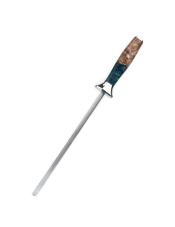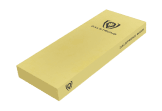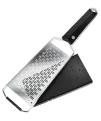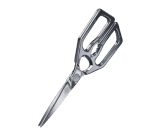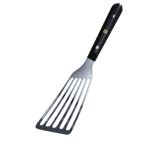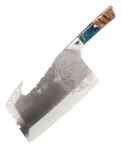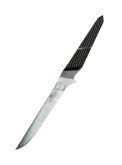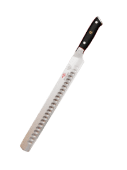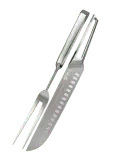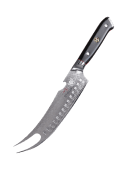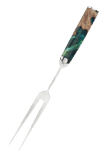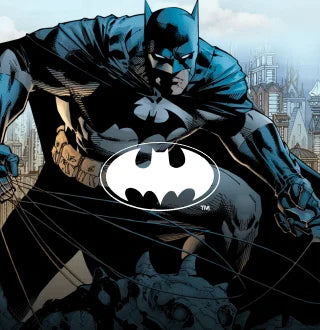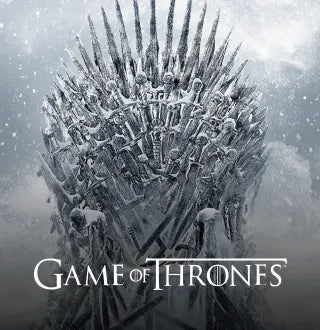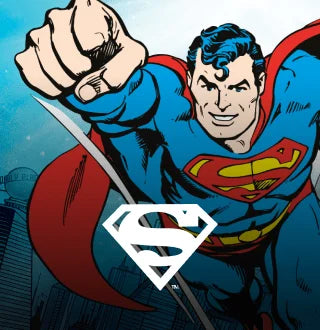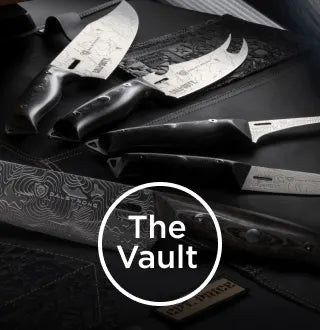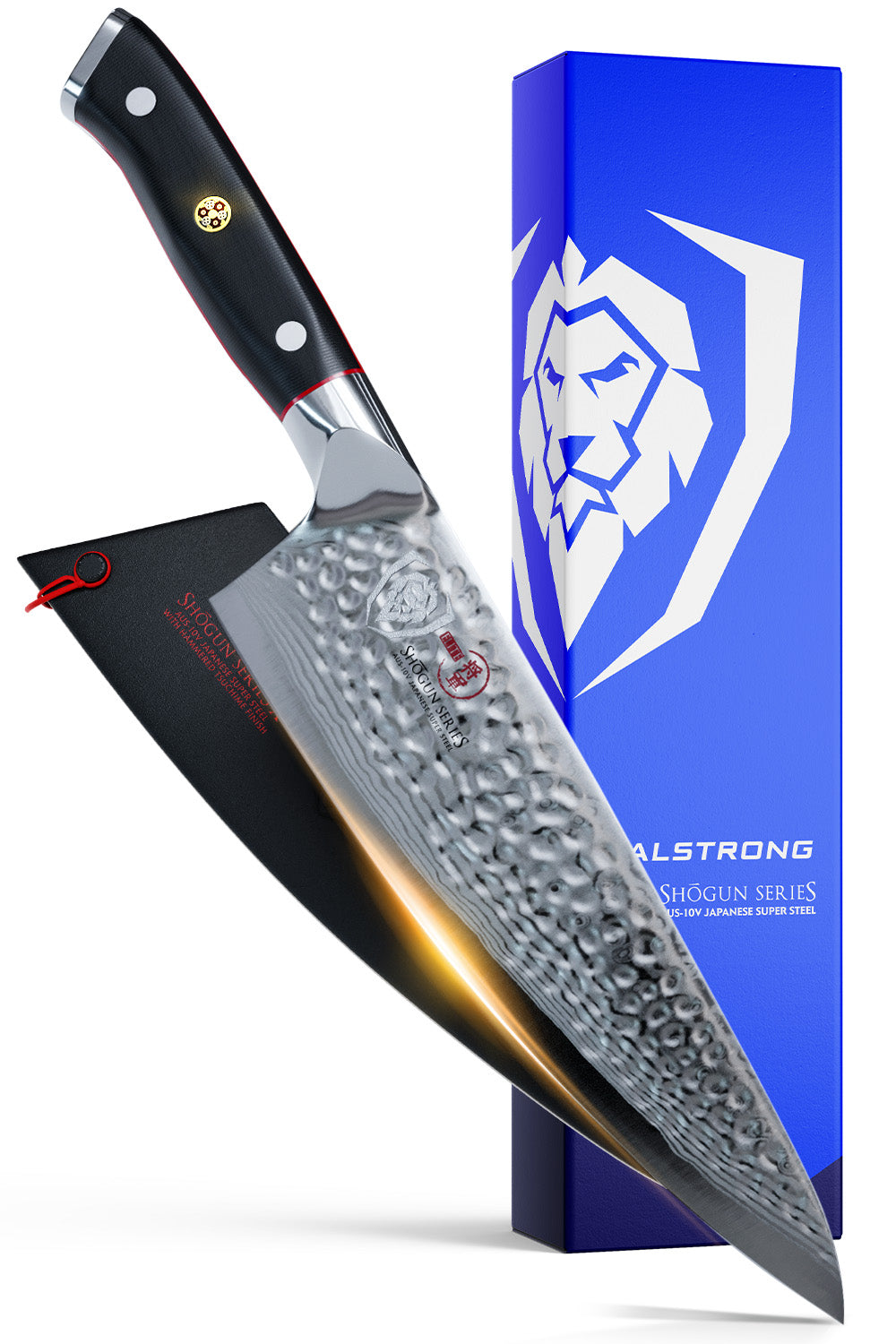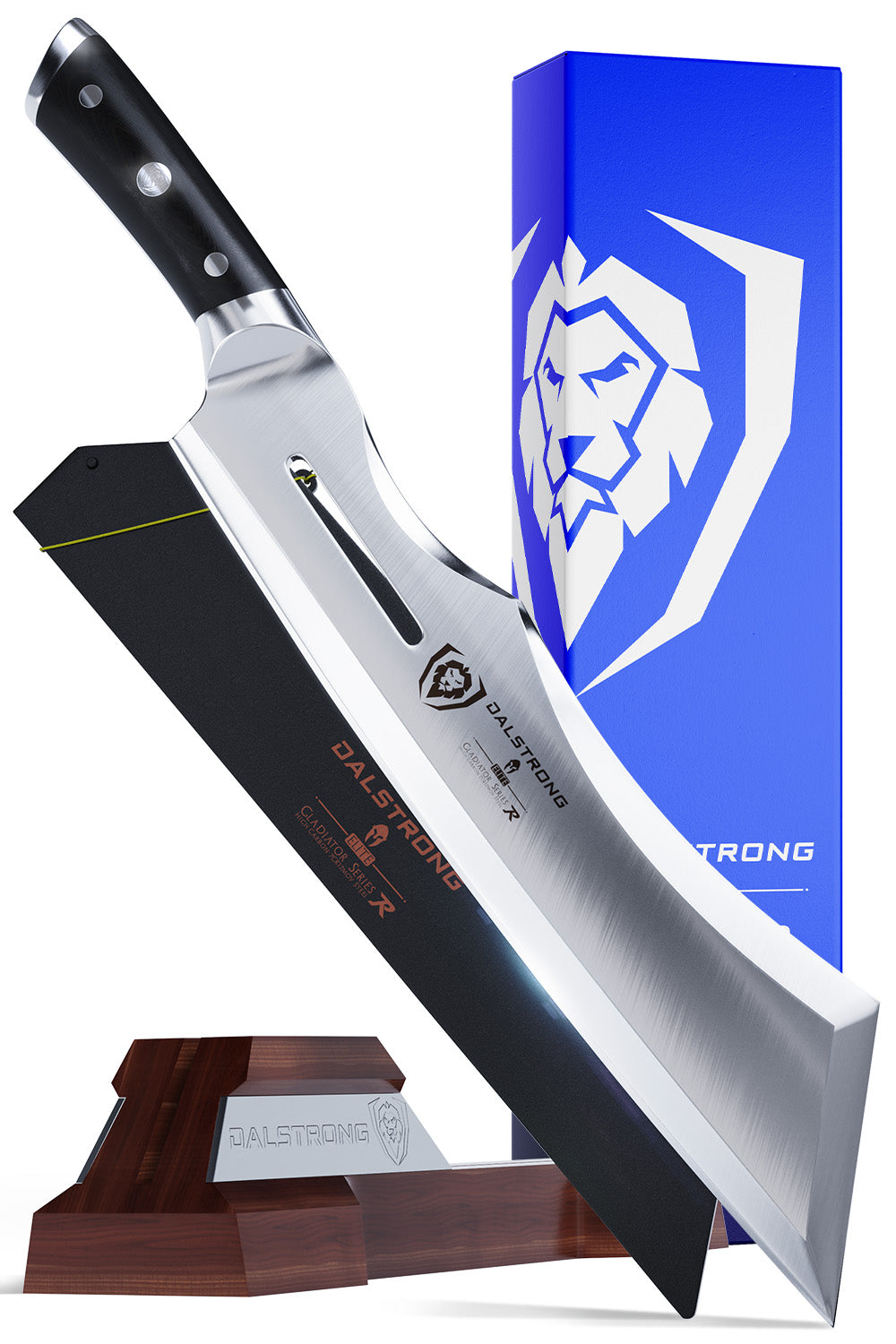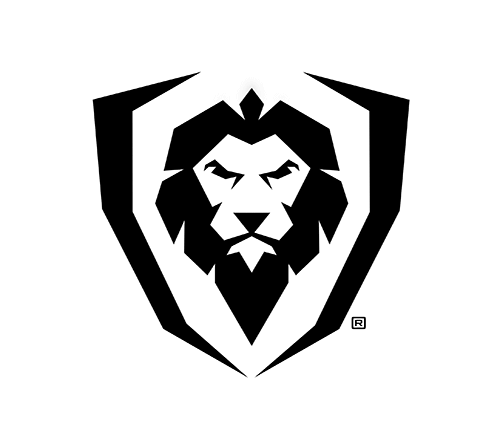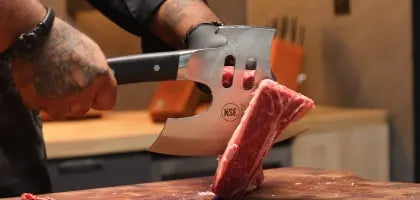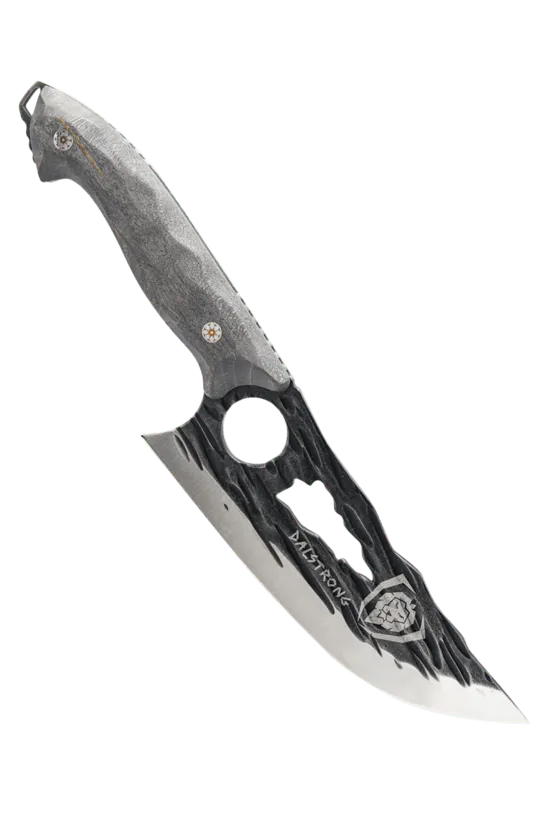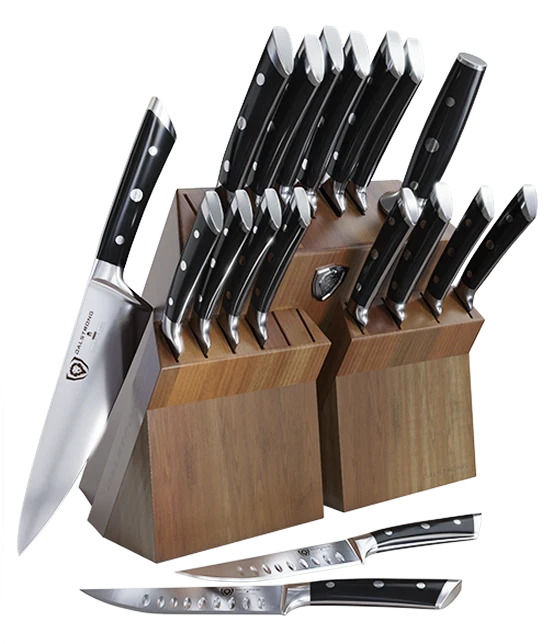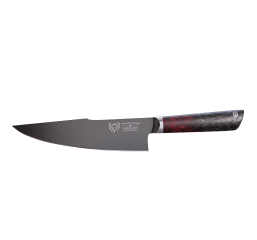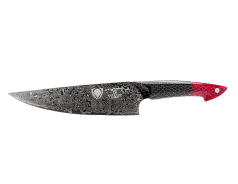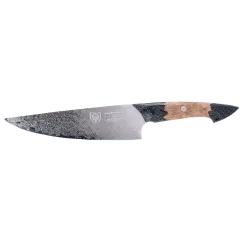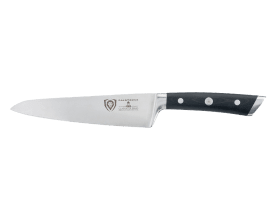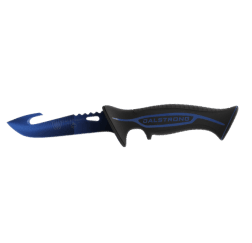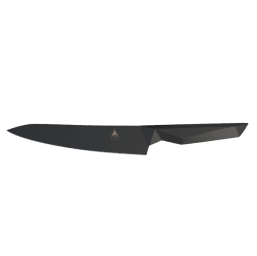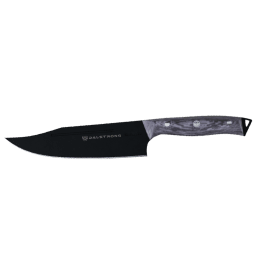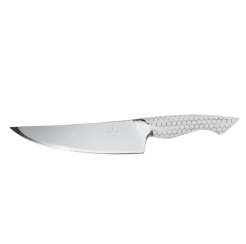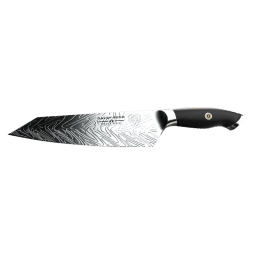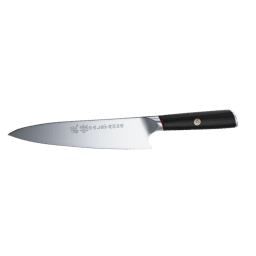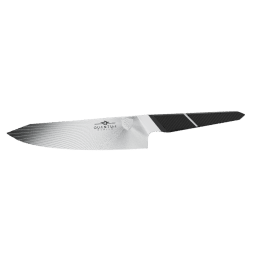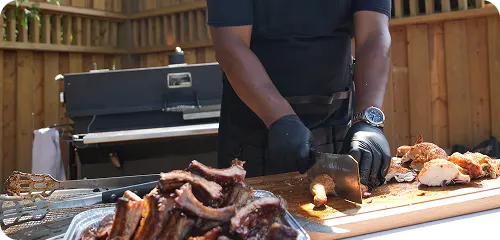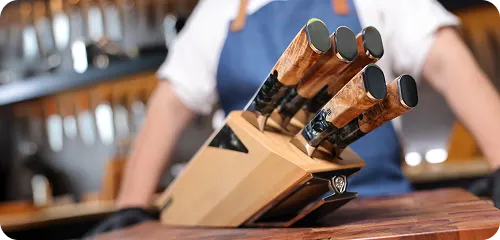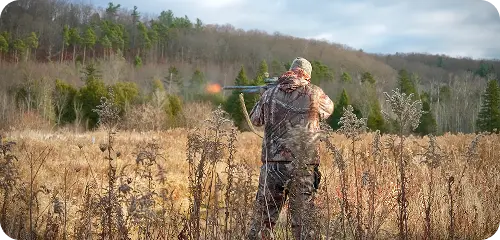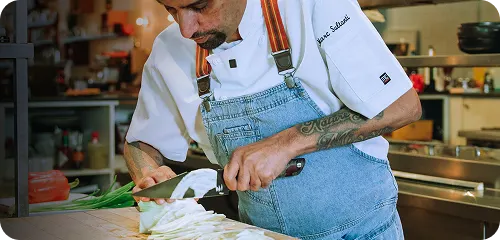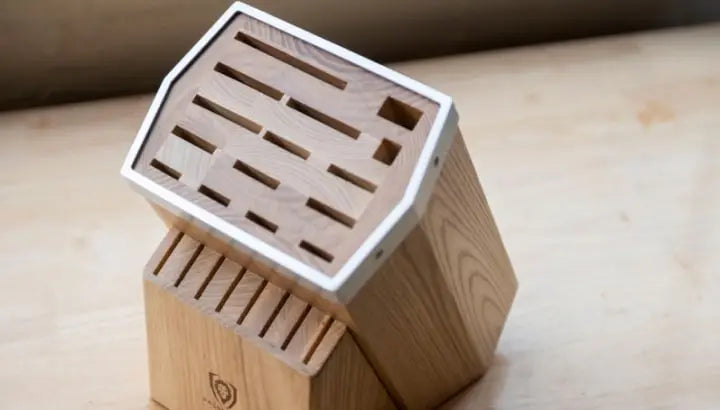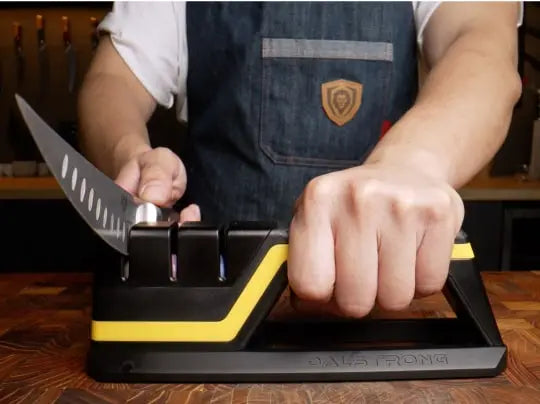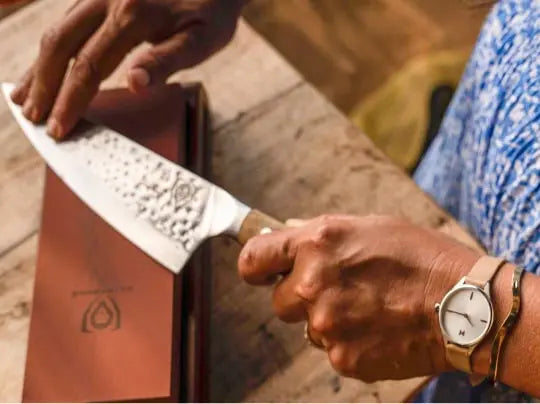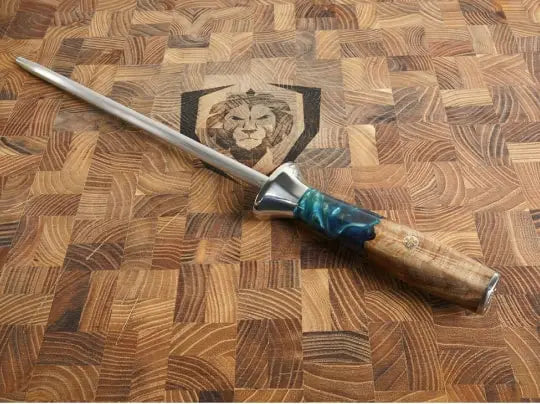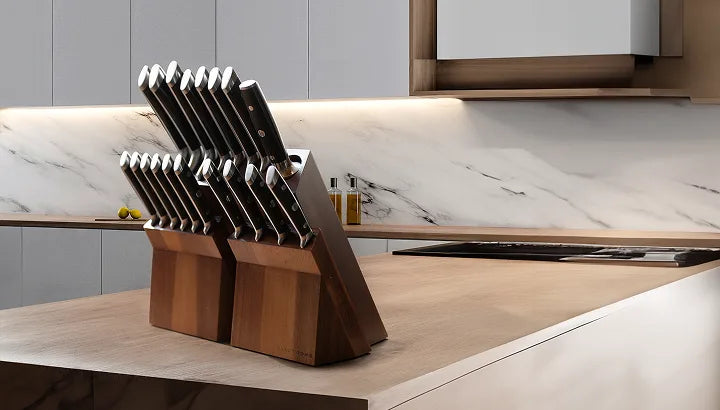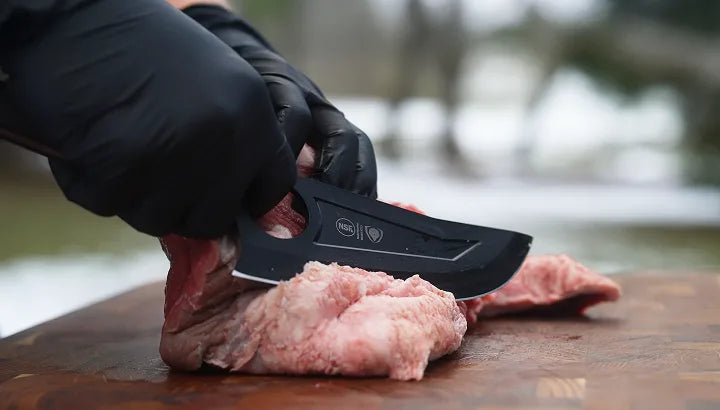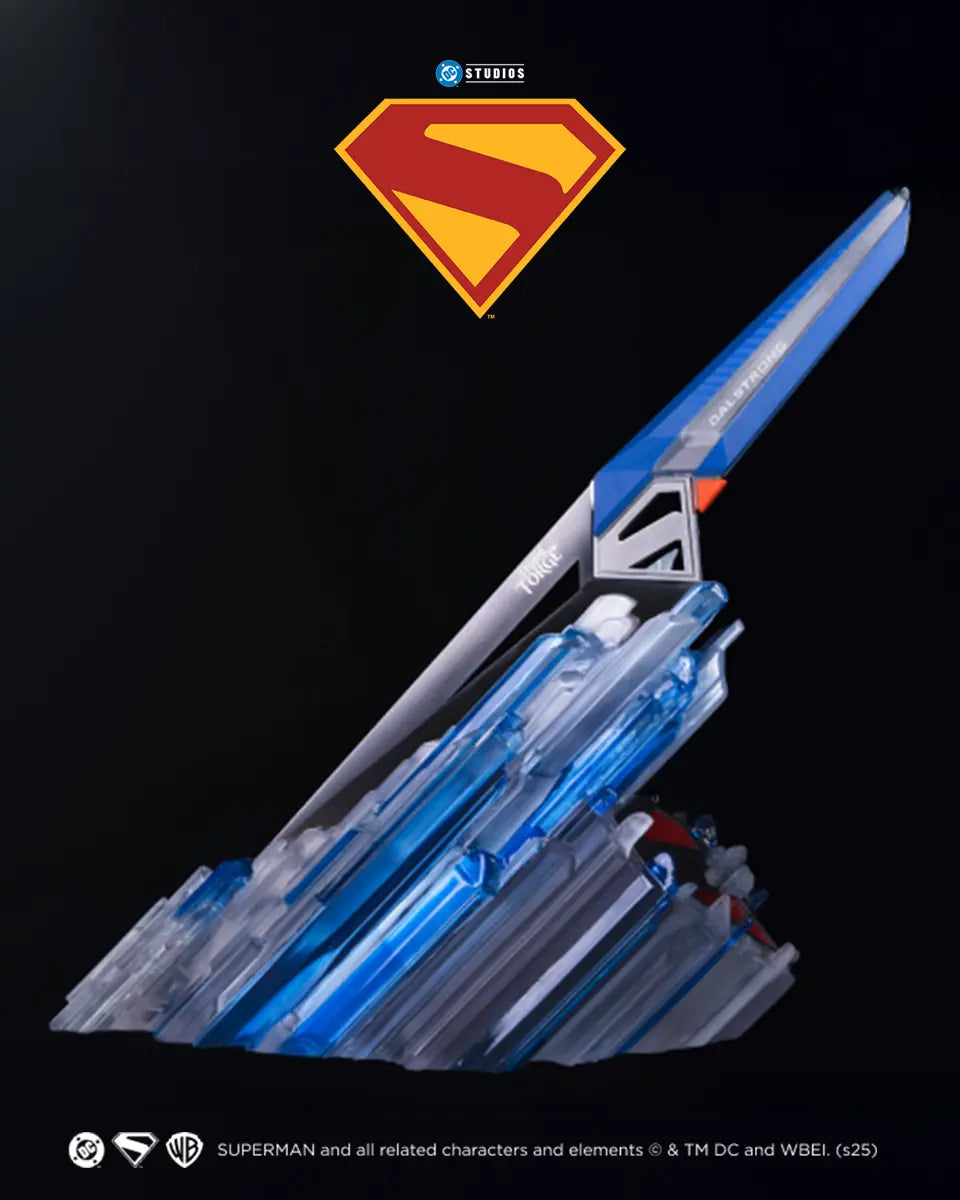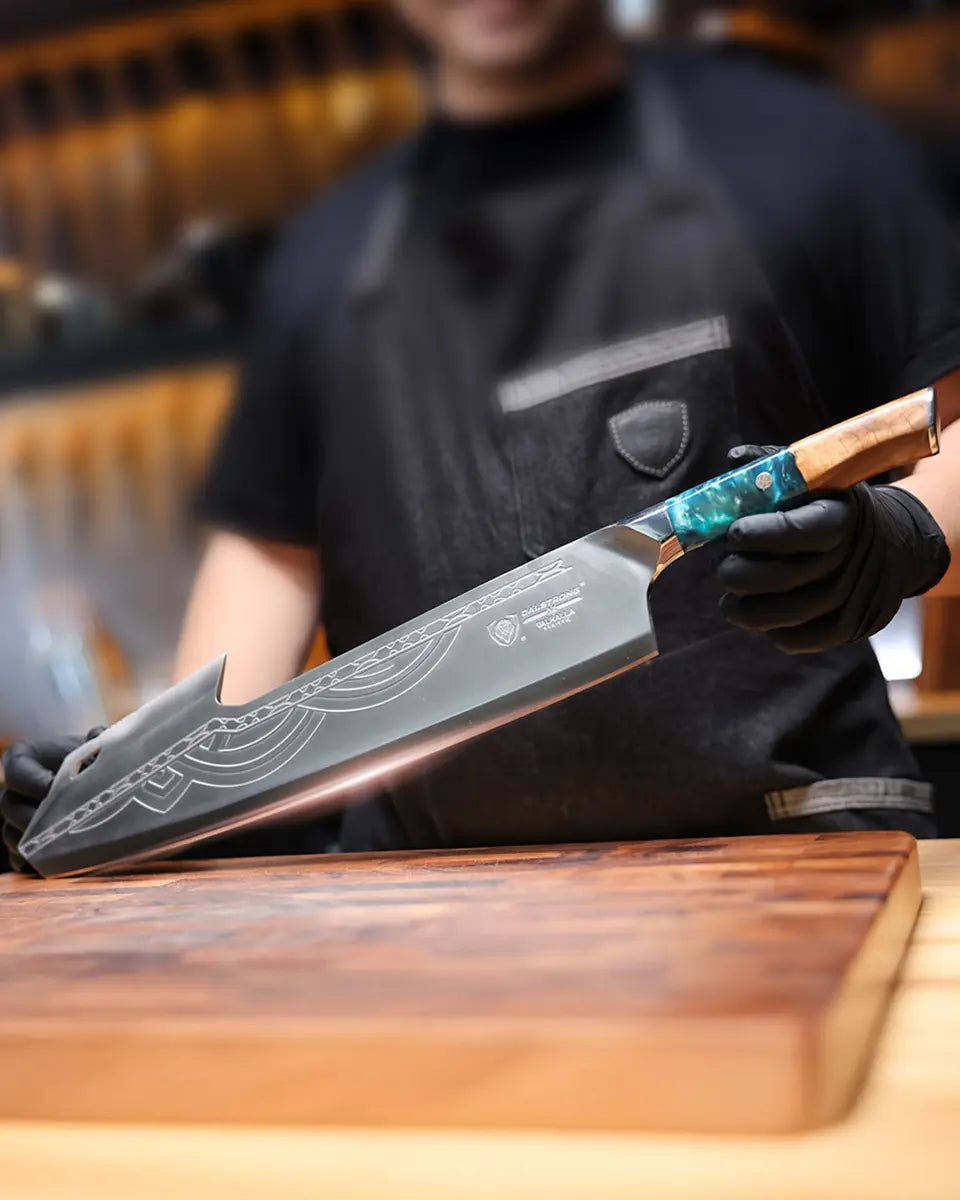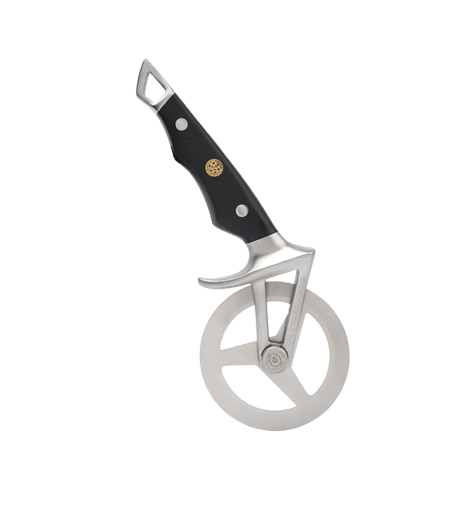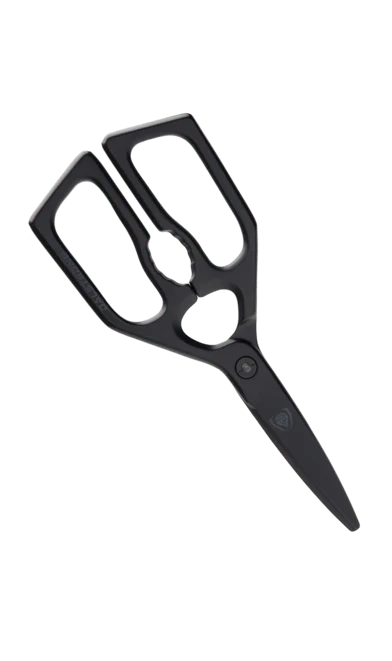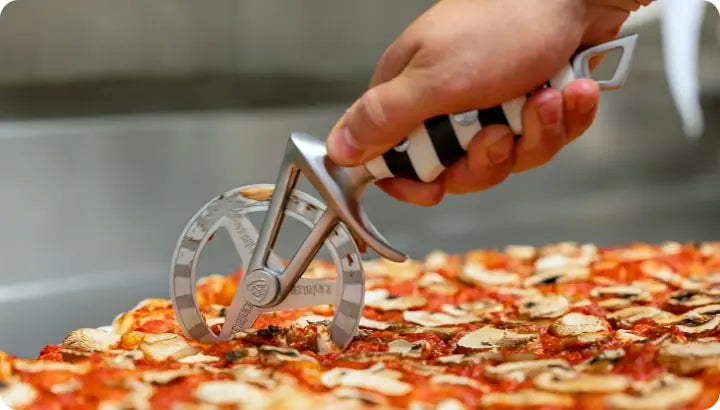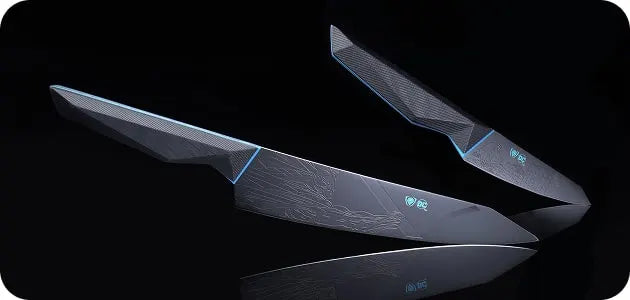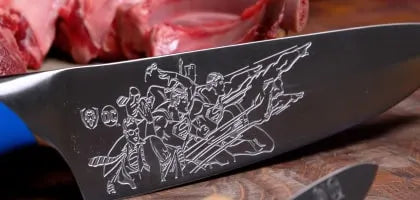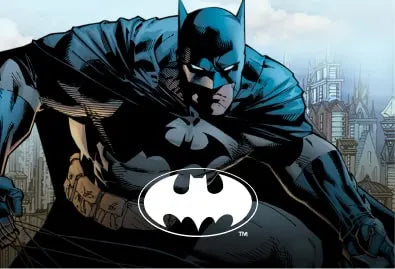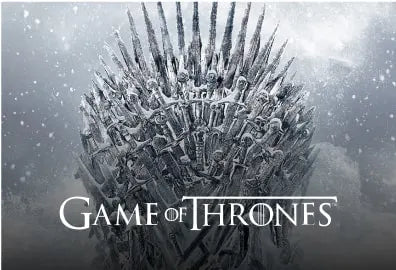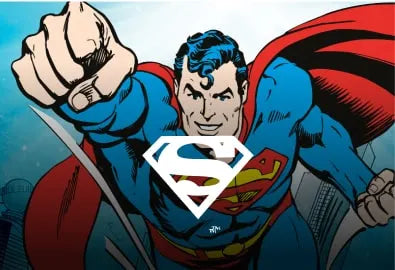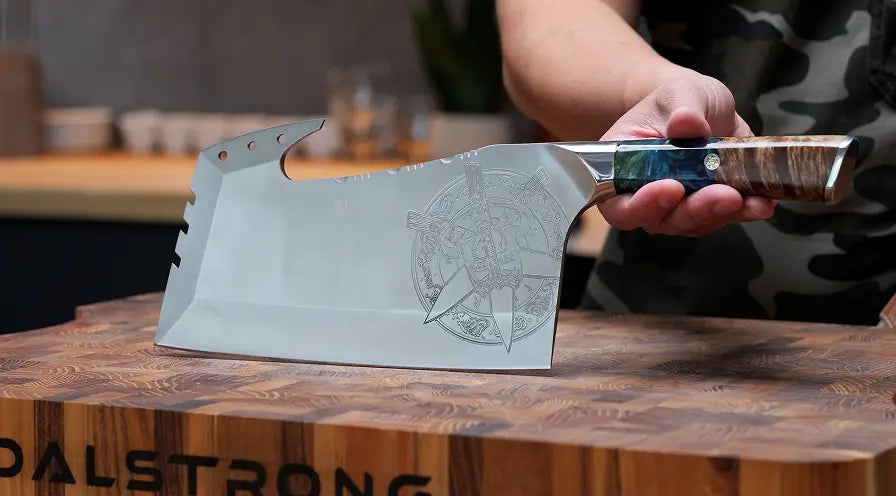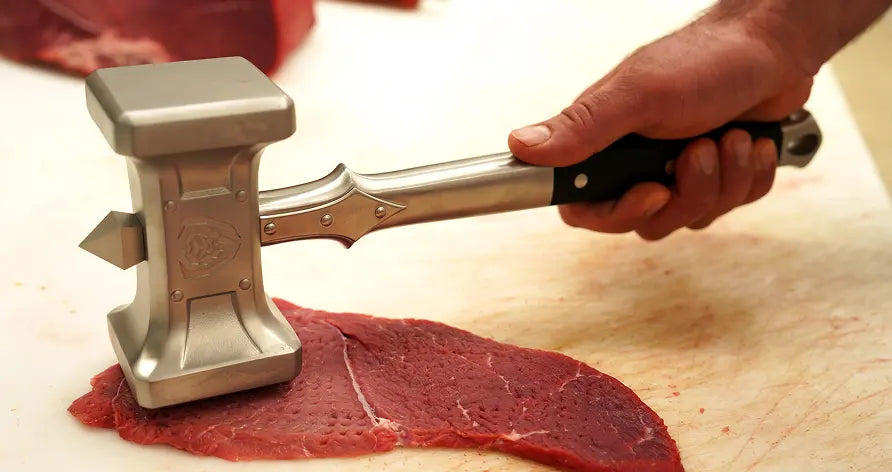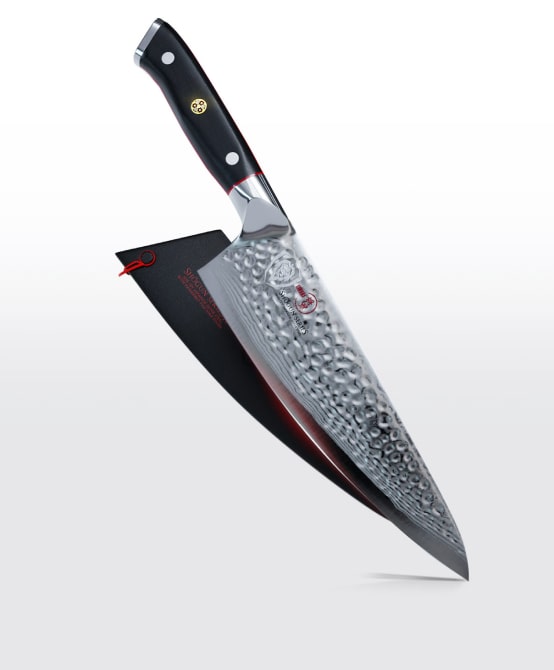
The Difference Between A Santoku Knife And A Chef’s Knife
- Chef’s knives are usually 8" - 12”, while Santokus are 5" - 7.9”.
- Santoku knives feature a boxier build.
- Chef’s knives are heavier to hold.
- Chef’s knives are traditionally made of stainless steel, while Santokus are made of high carbon Japanese steel.
- A Santoku blade connects directly to the handle, while chef’s knives have a bolster.
- Though they are both multi-purpose knives, Santokus are better for chopping while chef’s knives are better for a “rocking” motion.
- Santoku knives are easier to sharpen.

1. Similarities Between A Santoku Knife And A Chef’s Knife
Shogun Series 7'' Santoku Knife
Whether you’re just starting your journey in the world of kitchen knives, or you’re a seasoned expert who is expanding your arsenal, you’re likely to categorize knife types one of two ways. They are either a specialty knife (designed specifically for one purpose, like a paring knife, a boning knife or a bread knife), or they are “all-purpose” (versatile knives that can be used in all kinds of different scenarios).
Since these all-purpose knives can be used to conquer a wide amount of culinary challenges, it is easy to start to lose sight of the specific idiosyncrasies that set them apart from each other. Not all types of multi-purpose knives are the same, of course; some of them differ greatly from each other in the way they accomplish these tasks, in their construction and in their origins.
This is how the Chef’s Knife, a western knife that is one of the most traditional and popular kitchen tools, is often lumped in with the Santoku, which is a Japanese kitchen knife. They are similar in that they are both general-purpose knives with some design parallels, but there is a lot that sets them apart.
So both the Santoku knife and the chef’s knife are multi-purpose knives that can be applied to a number of kitchen cutting tasks, such as chopping, slicing, mincing and dicing. They can each be made of a variety of different materials, such as ceramic or metal (though most home and professional cooks prefer a steel kitchen knife for its durability and performance).
At a glance, they can look pretty similar, usually being of roughly similar sizes and shapes (though the differences between their appearances will become easier to spot the more you familiarize yourself with them).
2. The Differences Between A Santoku Knife And A Chef’s Knife
Shogun Series X 8" Chef Knife with Crimson Red Handle
Blade length and weight
The first difference we can point to is the length of the blade. While they can look pretty similar (a small chef’s knife will usually only be about an inch or so longer than a long Santoku knife), chef’s knives overall tend to be longer. A western chef knife is usually between 8" - 12 inches, while most Santoku knives are shorter at about 5" - 7.9 inches.
For chef’s knife blades, you’ll find differences between the German version of the blade and the French version. The German version of the blade comes with a curved section at the front of the blade, which provides more control and stability when you use the “rocking” motion for cutting.
Meanwhile, the French version of the blade is straighter, and features a more triangular front. For this reason it tends to be better for a slicing motion, particularly with meat. Both versions of the chef’s knife blade feature a sharp, sword-like point, which is great for puncturing before cutting.
The Santoku, on the other hand, originated from the Nakiri knife, which is a heftier blade. For this reason, it comes with a boxier build, and usually carries a bit of extra weight for the blade’s balance. The Santoku’s blade has a straight edge on one side with a less obvious point than the chef’s knife. This is better for slicing without accidentally piercing the food.
Blade materials
This difference can be traced back to the blacksmithing practices in each of their places of origin. The Santoku knife is made of Japanese steel, which is overall heavier. Coupled with its boxier construction, it makes it a better knife for chopping. Most Santokus use high carbon steel, while most chef’s knives are made with ThyssenKrupp German stainless steel.
Handle design
The difference in Santoku vs chef’s knife when it comes to the handle design is the bolster. A western style chef’s knife comes with a bolster, which provides better control of the knife (especially to chefs who may be less experienced). Traditionally, Santokus connect directly to the handle with no bolster.
3. Main Features Of A Chef’s Knife
- Originated in Germany and France.
- Can be either straight blade (most common) or serrated.
- The blade is broad, curving upwards to form a tip.
- Usually only double bevel.
- Features a bolster.
- Heavier to hold.
- Varies in size from 8” to 12”.
A chefs knife is best for:
- Cutting, slicing and disjointing meat (its pointed tip is well suited for this).
- Cutting that is versatile or complex.
- Slicing cheese.
- Chopping and dicing fruits and vegetables.
4. Main Features Of A Santoku Knife
- Originated in Japan.
- Thinner blade which allows for more refined slicing.
- Can be single bevel or double bevel.
- Does not usually feature a bolster.
- Lighter to hold.
- Varies in size from 5” to 7.9”.
A Santoku knife is best for:
- Cutting meat.
- Slicing cheese.
- Mincing meat or herbs.
- Creating very fine slices.
Learn more about where Dalstrong Knives are manufactured here!
5. Best Chef’s Knives To Buy
Of course, there are a huge variety of excellent chef’s knives to pick from. To make things a little easier for you, we’ve outlined our picks for best chef knives to buy below.
1. Dalstrong Gladiator Series 8" Chef Knife with Crimson Red Handle
This stylish powerhouse of a chef knife is a fantastic all-purpose tool for any home cook who wants to bring his kitchen skills to the next level. Personally, I’m partial to the crimson red handle, but it also comes in a number of stylish presentations: army green, glacial white, and Dalstrong blue.
PROS:
- Made of precision-forged, ultra sharp, wear resistant, single-piece, high carbon German ThyssenKrupp Steel.
- Extremely sharp blade, painstakingly hand sharpened to 16-18° per side, perfect for chopping and cutting.
- Highly durable food-grade ABS polymer handle.
- Ergonomic design; apply it to any task without feeling any discomfort.
CONS:
- Simple, unobtrusively stylish design; if you’re looking for something a bit flashier, check out the other knives on our list.
- If you’re not a fan of the red handle, check out the other colors: army green, glacial white, and Dalstrong blue.
2. Shogun Series X 8" Chef Knife with Crimson Red Handle
An incredible entry in Dalstrong’s Shogun Series of knives. This 8” chef knife is among the most powerful, attractive-looking and sharpest cutting kitchen knives you can purchase.
PROS:
- 67-layer Damascus steel, sharpened following the ancient 3-step Honbazuke method.
- Gorgeous hammered tsuchime finish; not only does it provide an impressive look to the blade, it also minimizes drag on food and increases cutting efficiency.
- Features Dalstrong’s beautiful “Tsunami Rose” pattern on the blade, making it one of the best-looking chef knives around.
- Crimson red food-grade ABS polymer handle.
CONS:
- A premium quality product in the upper end of the price range represented in this list.
- This chef knife is a little bit on the heavier side.
3. Shadow Black Series 9.5" Chef Knife - NSF Certified
Every time I come across another entry in the Shadow Black Series, I’m even more blown away by its functionality and design. This 9.5” chef knife is an absolute cutting powerhouse and will make an impressive collection to any home cook’s arsenal.
PROS:
- Premium-quality blade construction: precision forged, ultra sharp, wear resistant, single-piece, high carbon 7CR17MOV-X vacuum treated steel.
- Black, non-reflective titanium-nitride coating doesn’t just add corrosion resistance but also makes it look incredibly cool.
- Fiber-resin military grade G10 handle, ergonomically designed to fit nicely into your palm.
- A very low-maintenance knife, extremely easy to clean and care for.
CONS:
- This 9.5” chef knife is the longest blade in our list, and may be a bit big for some home cooks.
- If you are a stickler for having your kitchen tools match each other (as well as your decor), this Shadow Black Series chef knife might stick out a bit. (But hey, maybe you should look into the rest of the series…)
4. The Gladiator Series 8" Gemini Twin Blade - Dual-Sided Chef Knife

And now for something a little different. This ingenious chef knife brings together the best of both worlds, featuring a straight edge on one side and a serrated edge on the other. Truly an all-purpose workhorse that will simplify things in the kitchen for many home cooks.
PROS:
- The blade is made of precision forged, wear resistant, single-piece, high carbon ThyssenKrupp German steel, fantastic edge retention.
- Extremely sharp on both ends, painstakingly hand sharpened to 16° - 18° per side. A cutting and chopping powerhouse.
- The serrations are perfectly spaced apart to allow for a good “bite” into food, followed by easy slicing and cutting.
- Sturdy, premium quality laminated Spanish pakkawood handle.
CONS:
- The fact that this is a double-bladed knife makes it inherently tricky chef knife to handle -- exercise caution when cleaning or handling to avoid any chance of injury, and keep out of the reach of children.
5. The Frost Fire Series 8" Chef Knife
This excellent 8” chef’s knife is part of Dalstrong’s Frost Fire Series, a collection of light-weight, razor-sharp steel knives with an icy cold look. They look stunning and are also absolute powerhouses when it comes to performance.
PROS:
- A precision-based sandblast finish provides them their gorgeous “frosted” look.
- Engineered with a 7-layer high-carbon steel with added cobalt and expert heat-treatment.
- Extremely sharp edge, at a 16° - 18° degree angle per side.
- Slender, ergonomic white-resin handle with a beautiful honeycomb finish. Feels great and handles like a dream.
CONS:
- Your mileage may vary: the “frosted” look and honeycomb pattern might not be everyone’s cup of tea.
- Just like the Shadow Black Series, this distinctive-looking chef’s knife might stick out among the rest of your kitchen tools.
6. Best Santoku Knives To Buy
And just like with chef’s knives, there’s a great selection of Santoku knives to pick from. Below, we’ve outlined our picks for best Santoku kitchen knife.
1. Shogun Series 7" Santoku Knife
Power and presentation. That’s the best way to describe this impressive entry in Dalstrong’s acclaimed Shogun Series. This 7” Santoku knife isn’t just one of the most powerful and versatile knives you can buy, it’s also one of the best-looking.
PROS:
- An impressive Santoku knife blade: precision forged with an ultra-premium Japanese AUS-10V super steel cutting core at 62+ Rockwell hardness.
- 66 layers of high-carbon stainless steel cladding for strength, durability and stain resistance.
- Featuring the distinctive Dalstrong Shogun Series Tsunami Rose blade pattern, making it an absolutely beautiful knife.
- Comfortable to use, with an ultra-premium G-10 Garolite ergonomic handle
CONS:
- If you’re looking for a cleaner look, the Tsunami Rose blade pattern might be a little too busy for you. Check out some of the other Santoku knives on my list, particularly the Crusader Series 7" Santoku Knife - NSF Certified.
2. Omega Series 7" Santoku Knife
Few knives will get reactions like this fantastic 7” Santoku from Dalstrong’s Omega Series. An impressively engineered and aesthetically attractive knife that handles like an absolute dream and will help you sail through culinary challenges.
PROS:
- This is a scalpel-like blade, sharpened at an 8° - 12°degree angle per side.
- Made of BD1N American forged hyper steel with an added vacuum treatment.
- Extremely cool-looking “LiquidMetal’ pattern on the blade, which not only looks great but also minimizes drag and stuck on food, maximizing efficiency.
- Military grade G10 ergonomic handle.
CONS:
- This impressive knife is on the upper end of the price range represented in this list.
- This Santoku is definitely on the heavier side.
3. Shadow Black Series 7" Santoku Knife - NSF Certified
Another knife from Dalstrong’s excellent Shadow Black Series, this 7” knife brings all the series’s features to the Santoku format. A mix of outstanding performance and durability with an elegant look & feel.
PROS:
- Engineered for optimal maneuverability; sleek, comfortable and effective.
- Precision forged, ultra sharp, wear resistant, single-piece, high carbon 7CR17MOV-X vacuum treated steel.
- Impressive futuristic look thanks to its unique geometry and its black, non-reflective titanium-nitride coating.
- Fiber-resin military grade G10 handle, nearly impervious to heat, cold and moisture.
CONS:
- The titanium-nitride coating does make sharpening a little bit more challenging.
- Believe it or not, some folks are not crazy about the distinctive Shadow Black Series look.
4. Crusader Series 7" Santoku Knife - NSF Certified
The Crusader Series is known for bringing together incredible performance with a clean, minimalistic, less-is-more design and presentation. If you’re not one for the flashier-looking knives, the Crusader series might be what you’re looking for.
PROS:
- Precision forged, ultra-sharp, wear resistant, single-piece high carbon stainless steel.
- Hand sharpened to 16° - 18° per side, hitting the perfect balance for cutting those thin slices while also being strong and durable.
- The blade seamlessly transitions into a high-chromium stainless steel handle, which is very easy to clean.
- Incredible quality and performance at a very affordable price point.
CONS:
- If you’re the kind of person who likes a flashier design, we have plenty of other options on this list.
- Some home cooks might find this knife a bit on the lighter side.
5. The Frost Fire Series 7" Santoku Knife
Another great knife from Dalstrong’s beautiful Frost Fire Series, which features light-weight, razor-sharp steel knives with an icy cold look with a distinctive honeycomb pattern on the handles. Not only do they look great, but they are also incredible when it comes to performance.
PROS:
- Engineered with a 7-layer high-carbon steel with added cobalt and expert heat-treatment.
- Extremely sharp, hand sharpened to a 16° - 18° degree angle per side.
- A carefully hand-polished ergonomic handle.
- Honeycomb pattern adds a distinctive look to this great knife.
CONS:
- As with the chef knife we listed earlier, this distinctive-looking knife might stick out among the rest of your kitchen tools. Of course, that’s a great excuse to go shopping for other knives in the series!
7. Frequently Asked Questions

Should I buy a Santoku vs chef’s knife?
Evaluate which knife best serves your needs. They are both great options for multi-purpose kitchen work and can be used for meat, vegetables and fruit. Hopefully by laying out the differences above and showing you some options to pick from, you’ll be able to find the exact knife you’re looking for.
How do I sharpen a Santoku vs chef’s knife?
Santoku knives are generally easier to sharpen as they do not have a bolster. The fact that Santokus are also single bevel means they require less sharpening work as opposed to double bevel, which would be double the work!
We’ve put together a thorough explainer on knife sharpening and you can follow the same technique for both knives, but when you’re sharpening a double bevel chef’s knife you need to pay attention to the second side.
How long are chef’s knives and Santoku knives supposed to be?
Chef’s knives are traditionally longer than Santoku knives. You’ll find most chef’s knives to be in the 8” to 12” range, though there are some smaller ones. Santokus are usually between 5” and 7.9”.
Shop Dalstrong Knives Today
120 Day Full Money Back Guarantee with ALL Dalstrong Knives.
Written by Jorge Farah
Born on the coast of Colombia and based in Buenos Aires, Jorge is a cooking enthusiast and kitchenware obsessive with a tremendous amount of opinions.



